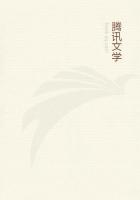'Among your kitchen-utensils,' I said, 'you have a pot in daily use;but it has lost its lid, which was knocked over and broken by the Tomcat playing among the shelves. To-morrow is market-day and one of you will be going to Orange to buy the week's provisions. Would she undertake, without a measure of any kind, with the sole aid of memory, which we would allow her to refresh before starting by a careful examination of the object, to bring back exactly what the pot wants, a lid neither too large nor too small, in short the same size as the top?'
It was admitted with one accord that nobody would accept such a commission without taking a measure with her, or at least a bit of string giving the width. Our memory for sizes is not accurate enough.
She would come back from the town with something that 'might do'; and it would be the merest chance if this turned out to be the right size.
Well, the Leaf-cutter is even less well-off than ourselves. She has no mental picture of her pot, because she has never seen it; she is not able to pick and choose in the crockery-dealer's heap, which acts as something of a guide to our memory by comparison; she must, without hesitation, far away from her home, cut out a disk that fits the top of her jar. What is impossible to us is child's-play to her.
Where we could not do without a measure of some kind, a bit of string, a pattern or a scrap of paper with figures upon it, the little Bee needs nothing at all. In housekeeping matters she is cleverer than we are.
One objection was raised. Was it not possible that the Bee, when at work on the shrub, should first cut a round piece of an approximate diameter, larger than that of the neck of the jar, and that afterwards, on returning home, she should gnaw away the superfluous part until the lid exactly fitted the pot? These alterations made with the model in front of her would explain everything.
That is perfectly true; but are there any alterations? To begin with, it seems to me hardly possible that the insect can go back to the cutting once the piece is detached from the leaf: it lacks the necessary support to gnaw the flimsy disk with any precision. Atailor would spoil his cloth if he had not the support of a table when cutting out the pieces for a coat. The Megachile's scissors, so difficult to wield on anything not firmly held, would do equally bad work.
Besides, I have better evidence than this for my refusal to believe in the existence of alterations when the Bee has the cell in front of her. The lid is composed of a pile of disks whose number sometimes reaches half a score. Now the bottom part of all these disks is the under surface of the leaf, which is paler and more strongly veined;the top part is the upper surface, which is smooth and greener. In other words, the insect places them in the position which they occupy when gathered. Let me explain. In order to cut out a piece, the Bee stands on the upper surface of the leaf. The piece detached is held in the feet and is therefore laid with its top surface against the insect's chest at the moment of departure. There is no possibility of its being turned over on the journey. Consequently, the piece is laid as the Bee has just picked it, with the lower surface towards the inside of the cell and the upper surface towards the outside. If alterations were necessary to reduce the lid to the diameter of the pot, the disk would be bound to get turned over: the piece, manipulated, set upright, turned round, tried this way and that, would, when finally laid in position, have its top or bottom surface inside just as it happened to come. But this is exactly what does not take place. Therefore, as the order of stacking never changes, the disks are cut, from the first clip of the scissors, with their proper dimensions. The insect excels us in practical geometry. I look upon the Leaf-cutter's pot and lid as an addition to the many other marvels of instinct that cannot be explained by mechanics; I submit it to the consideration of science; and I pass on.
The Silky Leaf-cutter (Megachile sericans, FONSCOL.; M. Dufourii, LEP.) makes her nests in the disused galleries of the Anthophorae. Iknow her to occupy another dwelling which is more elegant and affords a more roomy installation: I mean the old dwelling of the fat Capricorn, the denizen of the oaks. The metamorphosis is effected in a spacious chamber lined with soft felt. When the long-horned Beetle reaches the ***** stage, he releases himself and emerges from the tree by following a vestibule which the larva's powerful tools have prepared beforehand. When the deserted cabin, owing to its position, remains wholesome and there is no sign of any running from its walls, no brown stuff smelling of the tan-yard, it is soon visited by the Silky Megachile, who finds in it the most sumptuous of the apartments inhabited by the Leaf-cutters. It combines every condition of comfort: perfect safety, an even temperature, ******* from damp, ample room; and so the mother who is fortunate enough to become the possessor of such a lodging uses it entirely, vestibule and drawing-room alike. Accommodation is found for all her family of eggs; at least, I have nowhere seen nests as populous as here.















